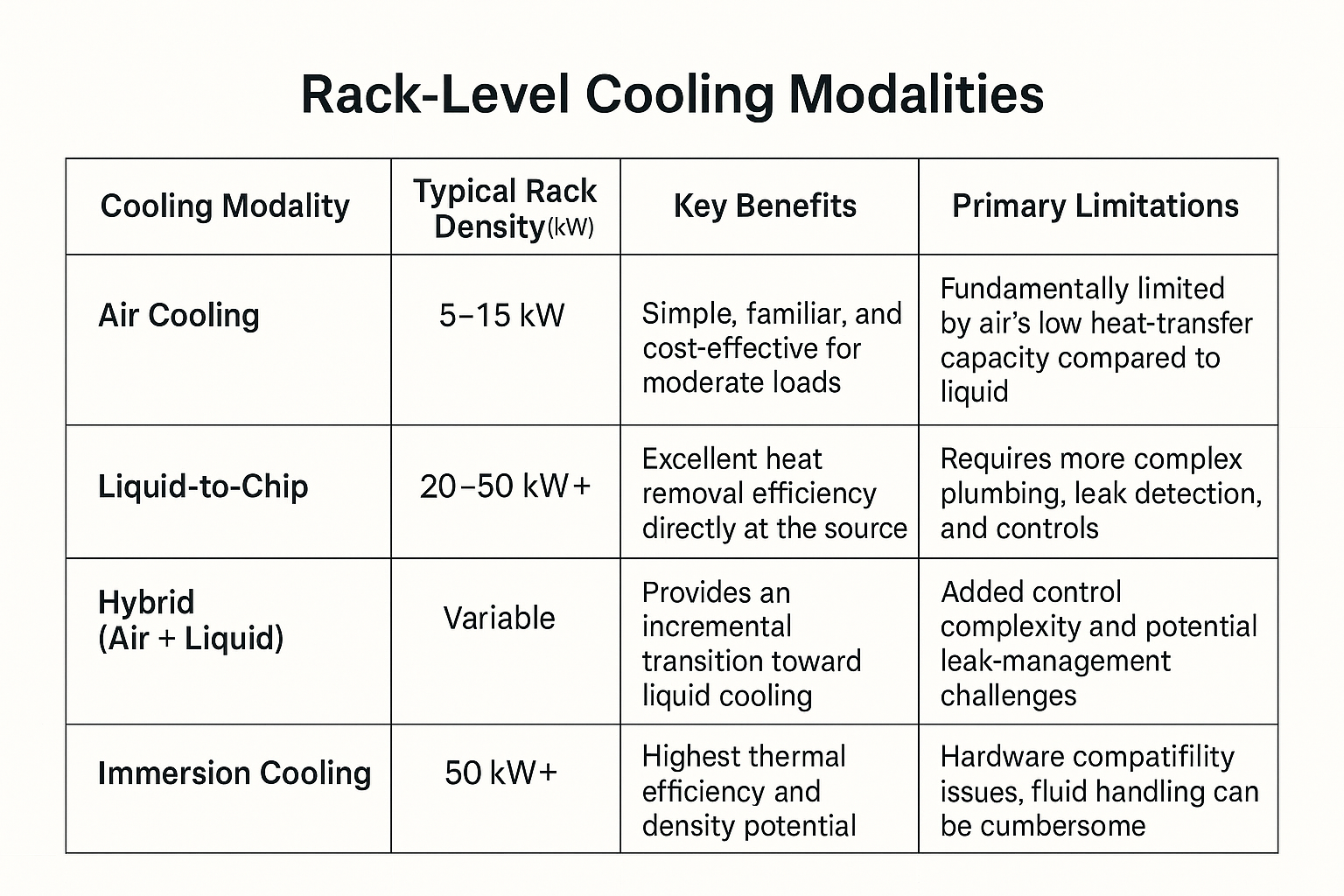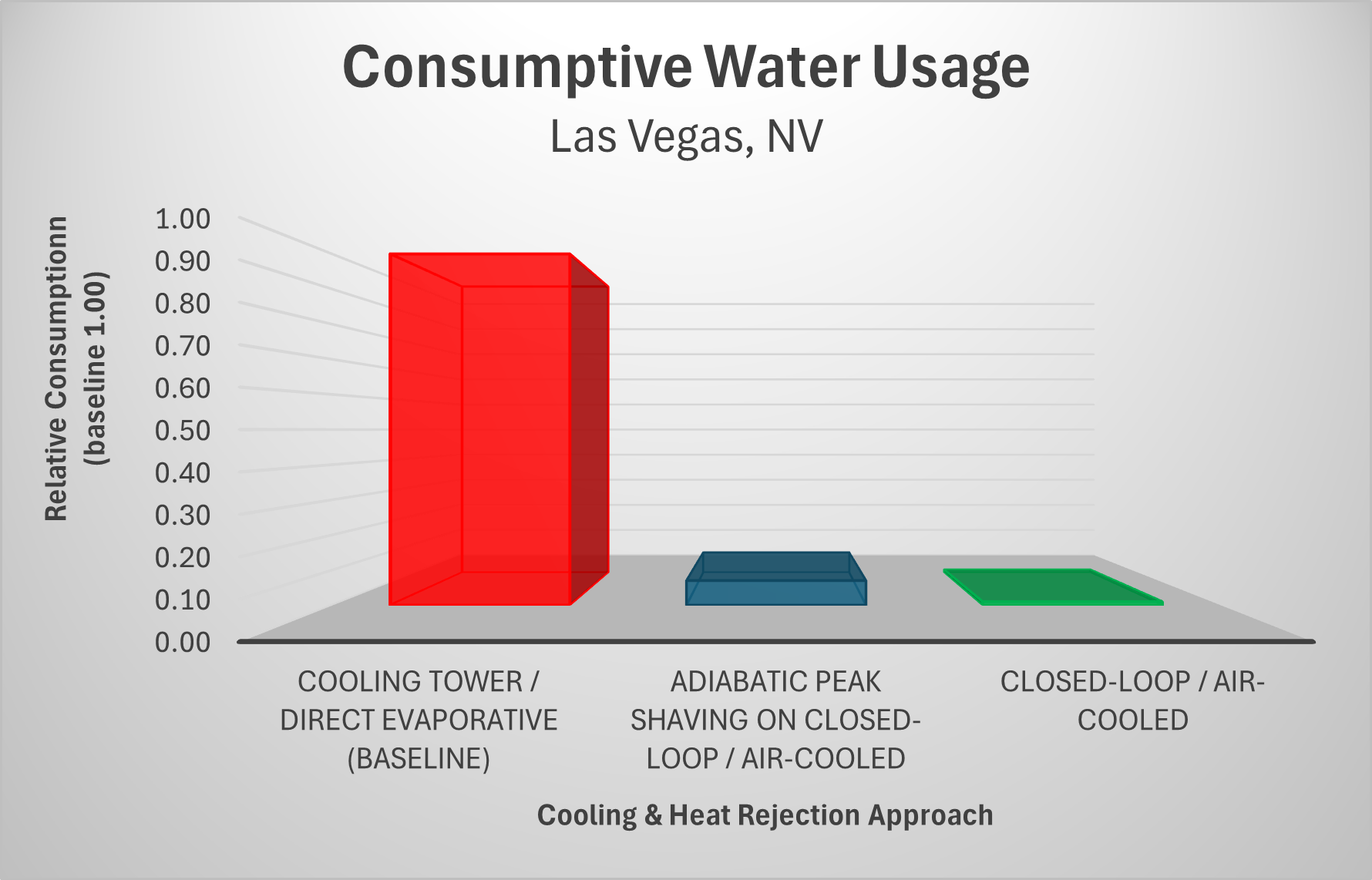Air Cooled vs Water Cooled: Demystifying Data Center Cooling Vernacular
In the data center industry, the phrases “air cooled” and “water cooled” are often used loosely — and without context, they can cause confusion. Do those terms refer to how the server racks are cooled inside the data hall? Or do they refer how the heat is rejected to the outside environment? Or is it both? Both stages are sometimes described with the same terms.
To clarify:
Rack cooling removes heat from the IT load (the chips and servers).
Heat rejection expels that heat into the surrounding environment.
Understanding this distinction is key to evaluating energy, water, and sustainability trade-offs in data center cooling design.
1. Cooling the IT Load — Inside the Data Hall
2. Rejecting the Heat — Outside the Data Center
Once heat has been captured, it must be released to the ambient environment. This stage is sometimes, but not always, often what people mean when they call a data center “air cooled” or “water cooled.” Here’s what those terms really mean:
Closed-Loop / “Air-Cooled” Heat Rejection
Includes air-cooled chillers, dry coolers, and DX units.
Heat is rejected to ambient air through coils and fans.
No consumptive water use.
Performance decreases at high ambient temperatures, especially excessive ambient temperatures caused by hot air re-circulation.
Open-Loop / “Water-Cooled” Heat Rejection
Includes cooling towers and direct evaporative walls.
Relies on water evaporation to expel heat.
Consumes water continuously and require chemical treatment and blowdown.
This diagram shows a hybrid liquid-to-chip and air cooled system. In this example, heat is being rejected via evaporation (consumptive water usage) at a cooling tower. The cooling tower and water-cooled chiller could be replaced by an air-cooled chiller or dry coolers to make the system closed-loop (no consumptive water use). Adiabatic precoolers can be added to either air-cooled chillers or dry coolers to mitigate peak conditions, often referred to as peak shaving.
Credit: https://www.lg.com/global/business/hvac-blog/data-center-air-vs-liquid-which-way-to-the-future
Adiabatic Precooling & Air-Cooled Systems — The Hybrid Middle Ground
Adiabatic precooling systems (like Peak+) for peak shaving combines both philosophies:
They use a fine mist or wetted media to pre-cool the ambient air before it reaches the condenser coil or dry cooler coil.
Water is used only during hot ambient periods, typically less than 15 % of the year.
Achieves up to 95 % reduction in water use vs. full evaporative systems like cooling towers or evaporative walls.s.
Challenges include precisely achieving and controlling the target adiabatic-cooled temperature to achieve both energy savings and water conservation goals: challenges that the Peak+ system uniquely addresses.
When looking at the consumptive water use graph above, one might reasonably ask the question “why not use a 100% closed-loop design with no consumptive water use?” It’s a good question that requires a thorough understanding of the economic and environmental tradeoffs involved. This article about Peak PUE and Utilization.
The Confusion Potential
Direct evaporative wall facilities, for example, are technically “air cooled” at the rack level but use massive amounts of water to cool that air before it enters the data hall. Sites that use cooling towers for heat rejection also use massive amounts of water at the site level, but at the rack level could be cooled by air, liquid (water/glycol), or both. Similarly, sites that use air cooled chillers or other closed loop systems for heat rejection could be cooled at the rack level by air, liquid, or both.
Three Key Takeaways
1. Context Matters
The phrases air-cooled and water-cooled mean very different things depending on whether they describe the rack cooling or the heat rejection stage.
Always clarify which part of the system you’re referring to.
2. Evaporative Cooling Isn’t Sustainable as a Primary Strategy
Traditional evaporative towers and walls consume vast quantities of water — an increasingly scarce resource.
As hyperscale and AI workloads proliferate, water use must be minimized in favor of closed or hybrid approaches.
3. Adiabatic Precooling Offers the Best Middle Ground
By combining closed loop cooling with selective evaporative assistance, adiabatic systems like Peak+ reduce annual water use by up to 95 % while maintaining thermal performance. This balanced approach optimizes both energy savings, water conservation, infrastructure usage effectiveness, environmental stewardship and total cost of ownership.



